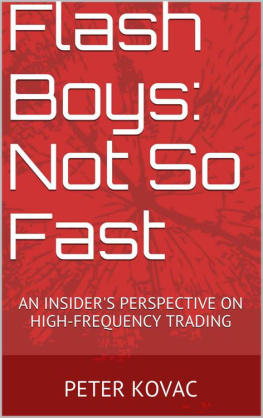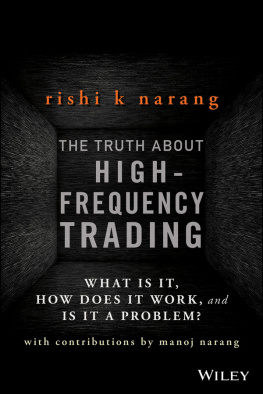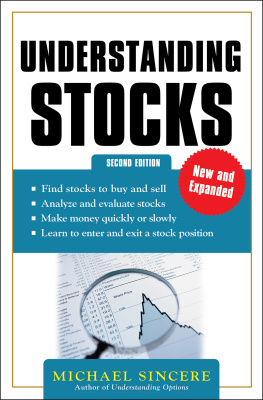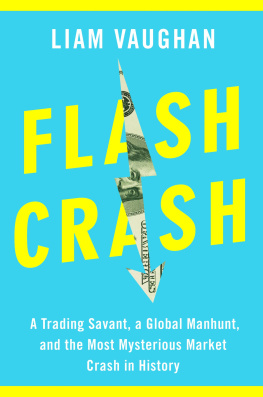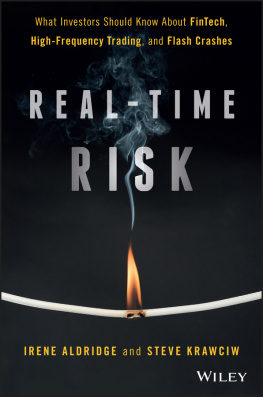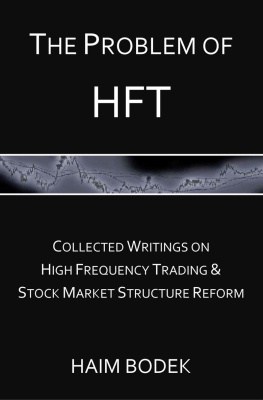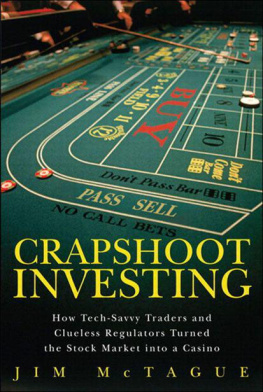Preface: What This Is and Why
In the past few months many people have asked me to explain Michael Lewis recent book, Flash Boys . The topic is quite complex, and naturally people want to know if the U.S. stock market is actually rigged, as the book claims. I wrote this piece to help them and you come to your own conclusion.
Flash Boys is a book about high-frequency trading that, curiously, includes no high-frequency traders. It lacks a single insiders account and, frankly, it shows. This is where I come in.
I am an industry insider, the kind of person who could have saved Lewis from making some really basic mistakes. I started programming trading strategies in 2003. After years in the trenches, I moved into management and ultimately became chief operating officer of my firm, EWT. I handled regulatory compliance, risk management, finance, trading operations, and a portion of the IT and software development teams and I had to know every aspect of the stock market inside and out. By 2008, our company was one of the largest automated market-making firms in the U.S., trading hundreds of millions of shares of stock daily, and had expanded into many other asset classes domestically and internationally. I left it all three years ago when EWT was sold to Virtu Financial (in which, in the interest of full disclosure, I still retain a small stake).
Those eight years at EWT provided me with a front row seat to all the events described in Flash Boys , and much more. During that time, I shared my experience and perspective in discussions with regulators and lawmakers here and abroad, advocating for the continued improvement of the markets discussed in the book. Many of my comment letters on these topics are publicly available on the SEC website. Even though I no longer work in trading, I can still get answers from a diverse set of close sources when a truly new question arises.
As a high-frequency trader, Id guess that Michael Lewis would dismiss my perspective out of hand. Perhaps you will do so too, but if you do youll miss out on a very well-informed insiders view of what Lewis gets right and what he gets wrong.
If you have a copy of Flash Boys , treat this as a companion that you can read alongside it to help explain some of the more confusing points, and add depth and context to key areas. The chapter numbers mirror Flash Boys , and Lewis examples and analyses within each chapter are addressed in the same order. If you havent read Flash Boys , dont worry. Ive summarized the main arguments that Lewis makes, as well as the most common counter-arguments, in the next section, entitled The Foundations of the Debate.
With that background, we walk through the examples and arguments put forth in the book, chapter by chapter. After evaluating the Flash Boys case, I pull it all together in the final section, Summing It Up. If youre more interested in the big picture than in detailed explanations of trading, just head there.
Hopefully this provides enough material to enable you to understand the more complicated aspects of Lewis book, and, more broadly, to better understand how the U.S. stock market functions today .
The Foundations of the Debate
More than a decade ago, major stocks traded largely on one of two stock exchanges, either the New York Stock Exchange (NYSE) or the NASDAQ Stock Market. Orders on these markets were executed by a limited number of designated market-makers or specialists, who had a de facto monopoly on executing orders in a particular stock. Monopolies seldom deliver the best price to their customers, however, and this arrangement was no exception. As scandal after scandal emerged documenting the abuses of this monopolistic power, it became clear that change was sorely needed.
That change arrived in the last decade, as Wall Street was upended through two important transformations to this system: computerization and competition. The result was that a couple of guys in Kansas City could connect to the exchanges in New York and, with a computer, some smarts, and a lot of chutzpah they could compete with the big boys on Wall Street to buy and sell shares to the public at a better price. Before Wall Street knew what hit it, folks like this many of whom had never even been to New York were responsible for a large portion of the trading on the exchanges.
This first Wall Street revolt didnt initially affect people like Flash Boys protagonist Brad Katsuyama, who were upstairs at the banks, making the big trades that were allowed to bypass the public markets. Their clients came to them when they had a large position and didnt want to spook the markets when they dumped their shares. By mid-decade, however, the big upstairs traders started feeling the pinch, too.
Simultaneous upheaval in technology (new, faster computers; better software), regulation (completely new rules came into effect in 2007), and market structure (now there were additional exchanges instead of just NASDAQ and NYSE) made it extremely difficult for the big-bank traders to stay on top of everything. While increased competition between the now numerous market-makers had improved prices for these traders, it had also stoked clients expectations for better prices on their trades. Perhaps more ominously, banks were now developing trading algorithms that aimed to replace human traders like Katsuyama altogether. And who were these high-frequency traders people were starting to talk about?
Oddly, there never has been an official definition of a high-frequency trader, other than the obvious explanation that high-frequency trading firms must trade a lot that is, quite frequently. Most stock market professionals would add to this definition that high-frequency trading firms employ computers to automate a substantial portion of the trading process, but thats about it for a definition.
In Flash Boys, Lewis never specifically tells the reader what he means by high-frequency trading. Implicitly, he adopts a circular definition in his second chapter: those who front-run are high-frequency traders, and high-frequency traders are the ones who front-run. Toward the end of the book, Lewis modifies this slightly, allowing that high-frequency traders may also do other things, but these things are also mostly bad. In the end he simply admits that for him this is a term used to obscure rather than clarify, and to put minds to early rest a footnote, following two-hundred plus pages of allegations of illicit and potentially criminal behavior, abdicating any responsibility to clarify whom he is accusing and whom he is not.
Interestingly, Lewis own protagonists, Brad Katsuyama and Ronan Ryan, do seek to clarify this term by distinguishing between good high-frequency traders and bad high-frequency traders. As it turns out, the good high-frequency traders are ultimately responsible for a substantial amount of volume on the stock market Katsuyama ultimately launches, IEX.
In the mind of Michael Lewis, though, all high-frequency trading is destructive and although Katsuyamas business faced a substantial array of challenges seven years ago, for Lewis the biggest threat was from high-frequency traders. Lewis argues that they targeted big bank traders like Katsuyama, inferring knowledge of his stock orders before the trades were completed and using this information to front-run these orders by trading before them. While they shave just fractions of a cent per share, he tells us, it adds up to vast profits for them, and a market that is rigged against everyone else. Lewis explains that nobody has stopped high-frequency trading because all the stock exchanges and regulators have a stake in the success of these high-frequency traders. In effect, he argues, the revolution of computerization was a wolf in sheeps clothing, and Katsuyama is now leading the real Wall Street revolt.

